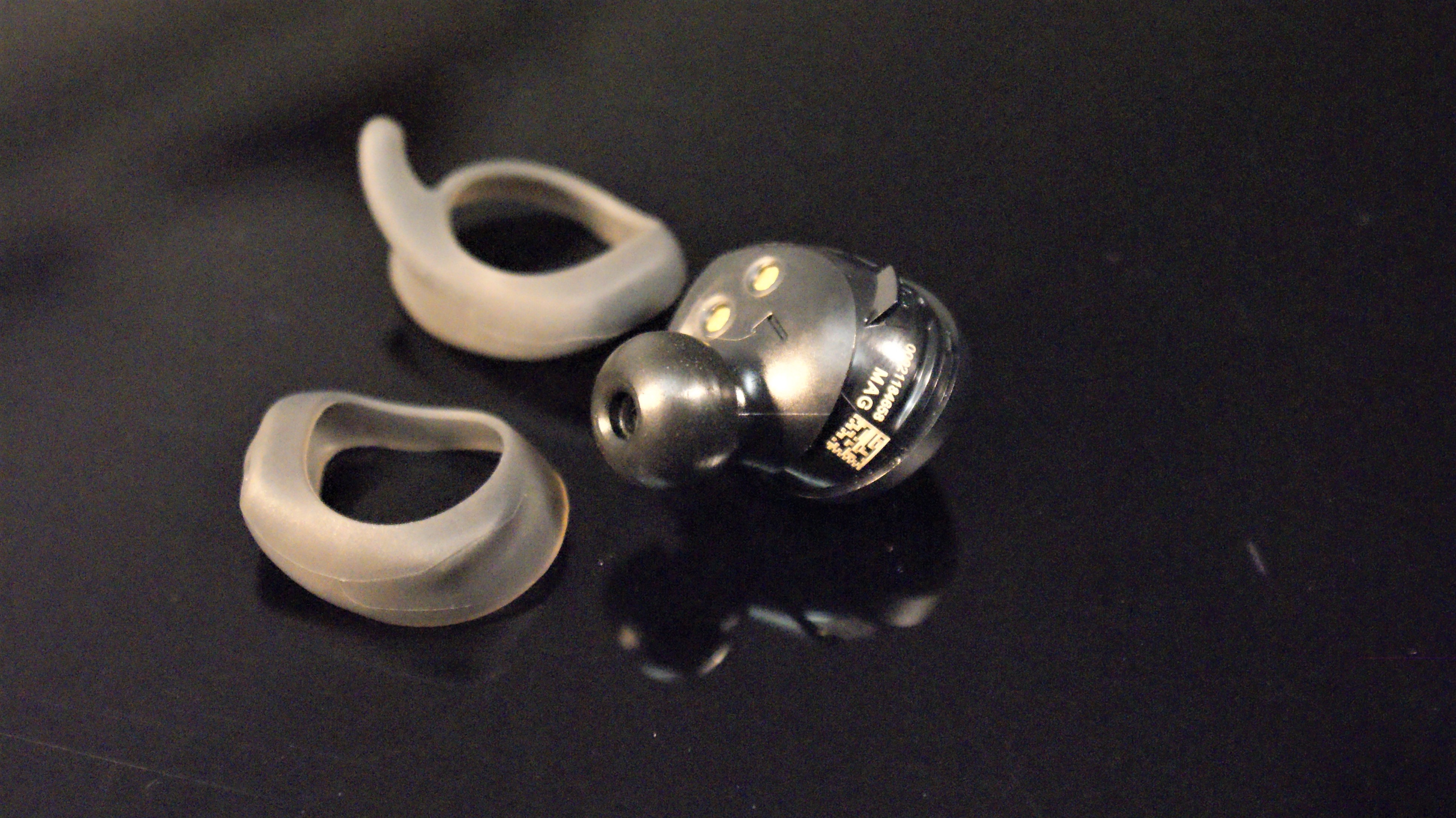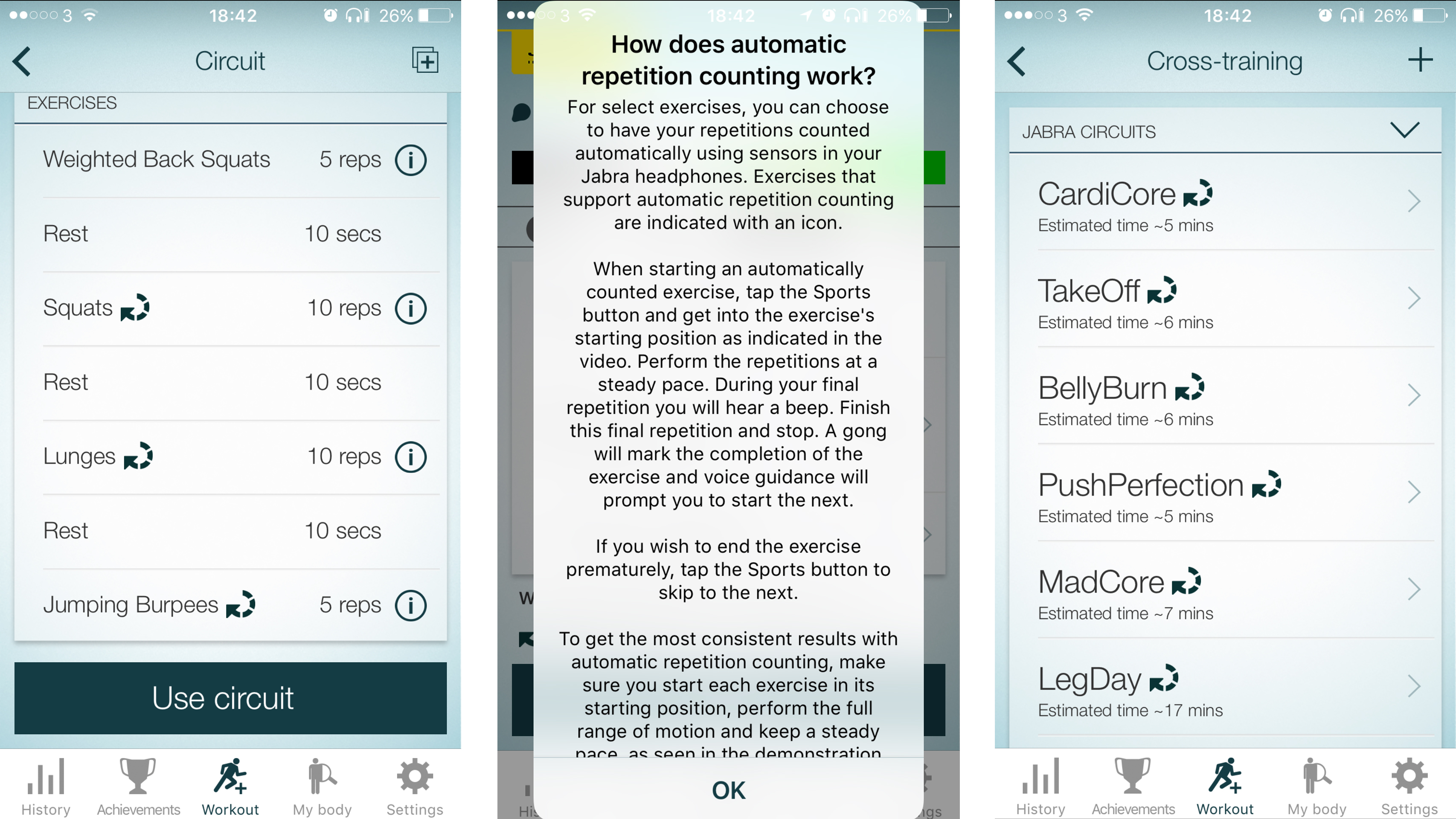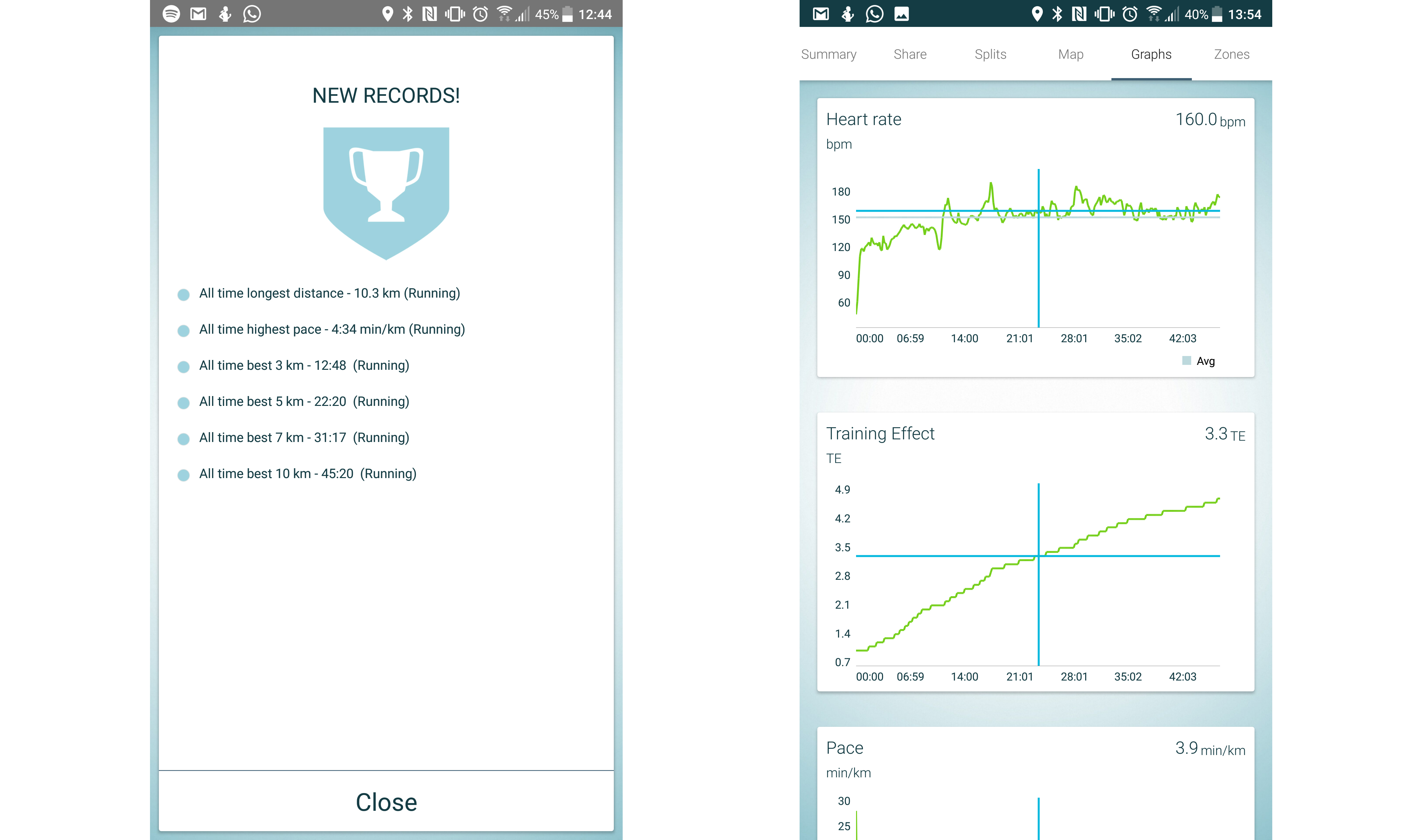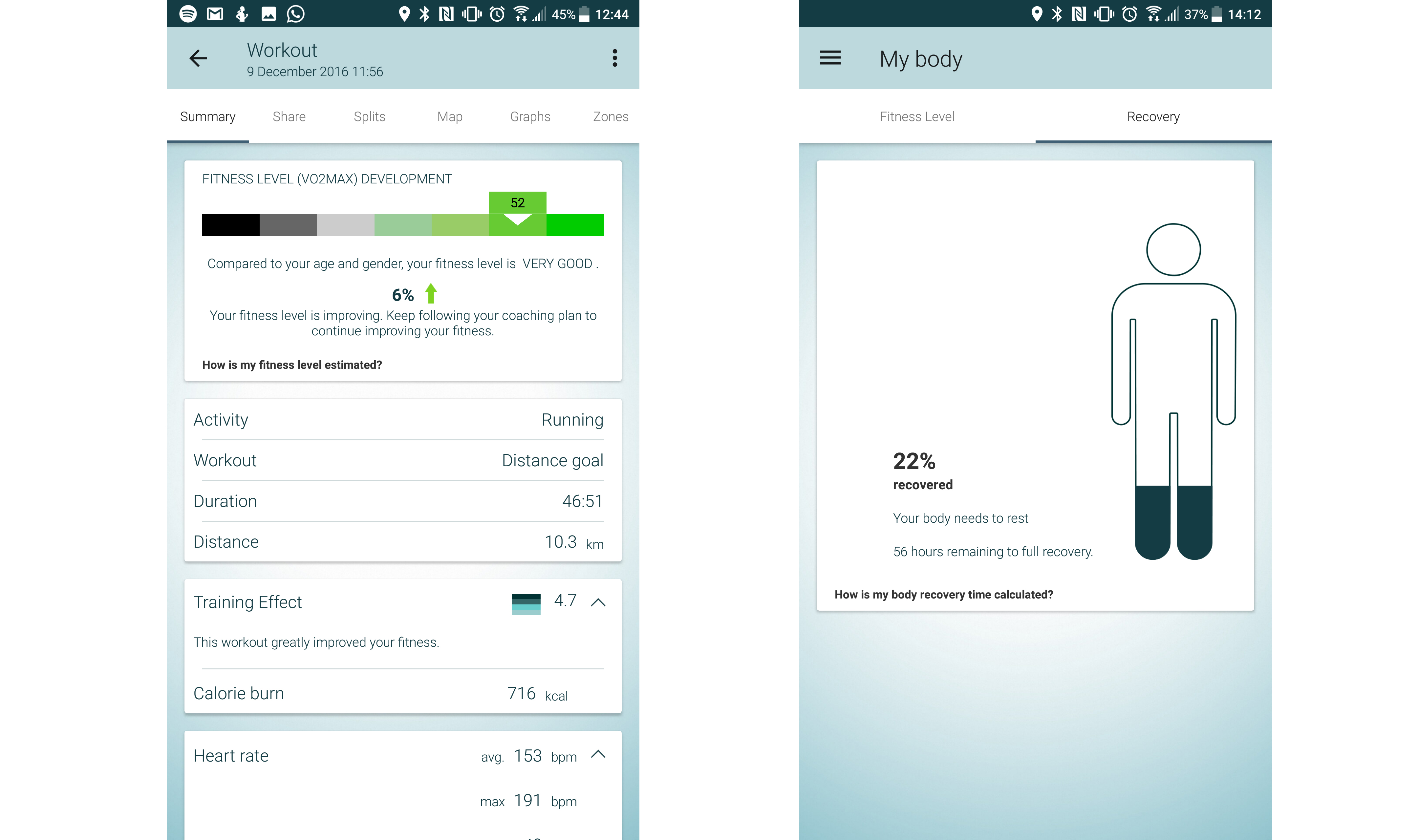Why you can trust TechRadar
Hello, lovely readers. It’s day two with the wireless Jabra Elite Sport headphones, and today I’ve been trying to get a better sense of what works… and what doesn’t.
One of the main things I was annoyed about yesterday was the lack of rep counting in the strength workouts, as I don’t want to have to be counting my own squats dammit.
I also wanted to see how accurate the heart rate monitor really is – there are a lot of brands proclaiming that taking readings from the head, rather than the chest or wrist, is the best way of monitoring your pulse, so I wanted to check that out.
Fit and design
Before I get into today’s workouts, I want to talk about something that’s developing into a real problem: the fit of the Elite Sport headphones.
They’re massive, as I’ve mentioned. They fill the center of your ear entirely, and it’s hard to work out which way up they go.

I initially tried without the wing tips, but the buds kept falling out. So I had to put on the smallest option to keep them in place (and cause the heart rate monitor to work) – but that really stretched my ear and caused pain that radiated slightly into the jaw.
It’s not excruciating, and other colleagues trying them quickly found the fit okay, but after long periods of use they become uncomfortable, and taking them out is painful.
(Update: Over time, this does soften slightly, as does trying a number of different foam tips. Finding something that generally does the job and doesn't cause much pain will be fine in a few days - but it's not a pleasant start).
That leads me onto the other major issue I’m facing: the buttons on the headphones themselves. On the right we have the function button (that moves between the exercises in the cross-training workouts) and the play / pause button. On the left bud live the volume controls; holding down either the up or down button will skip the current track.
Oh my god this hurts so much to use. Imagine jabbing a cotton bud full force into the skin of your ear and it’s up there with that pain. I cannot bring myself to change the tracks using this method, and every time I need to press the function button I wince.
I really wish these could have been touch-sensitive - like the touchscreen, as you can see on our iPhone 6 review – it would have been perfect, although I appreciate that this can be hard to work when you need four options from two buds.
(Update: I've spoken to Jabra about this, and the plastic has been softened - I've tried out the new models and it's definitely much better. Apparently touch sensitivity was considered, but wouldn't allow for gloved use, but it's jolly hard to press the button through gloves... so I think it's still a massive miss).
Morning MadCore workout

I had a big decision this morning: which workout to do? I was torn between some of the harder options, with leg workouts and harder cardio options, but with one eye on Sunday’s race I decided to go for the shorter MacCore workout, which combined explosive workouts and lunges with some cardio elements.
(I assumed they were what made it ‘mad’).
It was only seven minutes long, but with minimal rest and it was just incredibly hard. It was short, sharp and just what I wanted. It would have been nice if the app not telling me (while I’m lying on the floor gasping for air) that the workout was in the ‘light’ heart rate zone.
Yeah, thanks for that.
Thankfully, thanks to an update, the Jabra Elite Sport headphones can track your repetitions of popular workouts.
This means any workout on the app that uses lunges, burpees, squats, press ups and most things which use a dumbbell can be tracked automatically without you needing to count yourself.
It’s still not perfect - there are a lot of exercises where you’re still told to count the reps yourself as the headphones can't do it for some reason - but the accuracy is pretty good.
I’ve tested the Jabra buds through a few different exercises and while you still need to tap the button to confirm you’re in position (so you can give yourself a sneaky break far too easily...) workouts feel a lot more personal now.
It’s a shame the app doesn't automatically force you to do more of each exercise as you get fitter, but there’s always the option to create manual workouts if that’s your thing - and you can easily just press ‘copy’ in the top right-hand corner to edit each session as you like and create that progression.
Jabra told me that this could be an option for the future though - this is going to be a piece of tech that definitely evolves over time.

Testing the heart
For today’s 10K run I decided to pit the Jabra Elite Sport headphones against the Garmin Forerunner 735XT running watch with chest strap, so that I could see if the two different styles of monitoring agreed with each other.
The plan was to run a fartlek (stop the sniggering), which is a lot of different speed runs before a long and sustained effort, to see how the two correlated. It meant a lot of slowing down then heading into all-out sprinting to push the heart rate trackers to their limits.
Initially, both agreed to within one or two beats per minute (BPM), which was great. But around two-thirds of the way in the Jabra headphones started reporting much higher heart rates, despite me not running hard.
Looking at the results after, I could see that changes in speed caused the Elite Sports to spike where the Garmin was more serene in recording changes in BPM.

Without a lab it’s not possible to say definitively which is more accurate, but a sudden jump to a much higher heart rate within a few seconds doesn’t seem that believable.

And the random high rise in heart rate from the Elite Sport headphones later in the run seemed to be fit-related, as when I pushed them a little further into the ear the two heart rate monitors synced up again.
The distance run was just over 10 kilometers, but the Jabra app has me down at 10.3km – which means over the course of a race you’d need to run for a minute longer to reach the finish despite the headphones telling you it was over.
Nothing major, and it could be phone-related, since that’s where the app pulls the GPS data from.
Day 2 verdict
I really like the Jabra Elite Sport headphones… well, in theory. They’re the complete package, helping me through strength and running workouts with detailed info and genuine heart rate feedback.
My VO2 Max (measure of fitness) rose again today, up to 52, and that showed there’s a real learning curve to these buds. I don’t get the point of the fitness tests at the start though – they’re clearly pointless.
Yesterday, my first run gave me a VO2 Max of 49. Then doing Jabra’s dedicated test pushed it to 50. I knew it was closer to 60.
So I did the test again. 51. And today, without doing the test, I’m up to 52… every run the headphones are getting more and more accurate.

And the reason I know they’re still too harsh is the race predictor, which uses your VO2 Max to predict race speeds and recovery times.
I’m able to comfortably beat all the times it reckons I’m capable of based on my current fitness by four minutes (for 5K) all the way to 49 minutes (for a marathon).
I even did my 10KM distance today faster than the 46 minutes the app predicted I should be able to do based on my fitness.
If it’s so far off, what’s the point in taking the test? I get that it takes time to learn, but there’s no point encouraging the test when you start using the headphones if it’s not going to be any use.
And it means the recovery advisor, which says I can’t run at full speed for three days, is wrong too - I’ve got that race on Sunday, and today was an easier day to taper down for it.
Overall, I'm still enamored... but perhaps slightly less so than yesterday.

Gareth has been part of the consumer technology world in a career spanning three decades. He started life as a staff writer on the fledgling TechRadar, and has grew with the site (primarily as phones, tablets and wearables editor) until becoming Global Editor in Chief in 2018. Gareth has written over 4,000 articles for TechRadar, has contributed expert insight to a number of other publications, chaired panels on zeitgeist technologies, presented at the Gadget Show Live as well as representing the brand on TV and radio for multiple channels including Sky, BBC, ITV and Al-Jazeera. Passionate about fitness, he can bore anyone rigid about stress management, sleep tracking, heart rate variance as well as bemoaning something about the latest iPhone, Galaxy or OLED TV.
